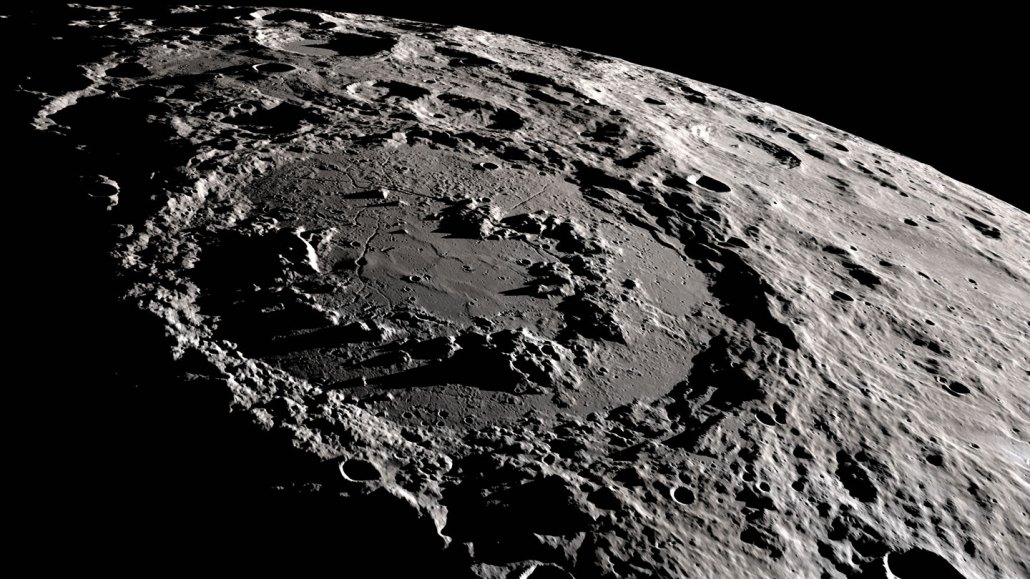Ice at the moon’s poles might have come from ancient volcanoes
The eruptions may have produced several transient atmospheres

Schrödinger crater (shown) lies near the moon’s south pole. Ice might have arrived at both lunar poles as water vapor released by ancient volcanic eruptions.
NASA GSFC Scientific Visualization Studio